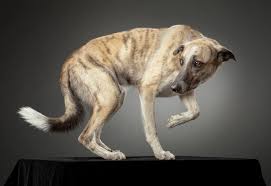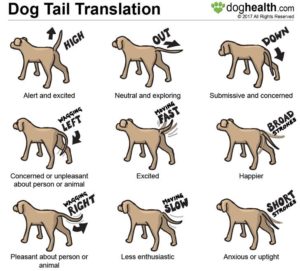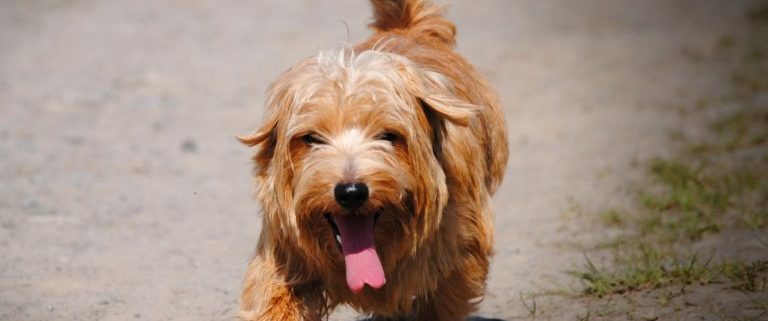Tail Wagging….What Does It Mean?
Have you ever found yourself encounter a dog with it’s tail wagging and when you reach down to pet it, you are met with a growl or a snap instead of the happy dog you were expecting? Well, chances are you aren’t alone. Most of us were brought up on the idea that a wagging tail equals a happy dog, but that just isn’t true. Tail wagging is actually a way more complex form of communication than most of us realized.
Dogs’ tails serve two different purposes. First, they serve a physical purpose of helping a dog balance when they are walking in narrow spaces or steering when they are moving quickly. Puppies don’t wag their tails until they are a few months old and the need to communicate becomes necessary.
The second purpose, is communication. It has been observed that dogs don’t wag their tails when they are alone. Dogs like other animals need to be able to communicate a lot more than happiness so let’s look at just what some different tail wags can mean.
- Left vs Right wag: A dog wagging it’s tail to the right is likely in a positive mood where as a dog wagging it’s tail to the left is likely in a negative mood. A 2007 study in Current Biology found that this was due to the side of the brain that was controlling the tail. The left side, which controls the right side of the body is more associated with positive and engaging feelings. On the flip side, the right side of the brain is associated with feelings of withdrawal.

- Helicopter wag: If you’ve ever seen this you will know what I’m talking about. The last time I saw it was on meeting a very large, but very sweet yellow lab. His tail was high in the air and circling like a helicopter propeller at the prospect of getting to play with one of our dogs. This wag shows a state of great excitement.
- Tucked tail: I guess I could call this the anti-wag A dog with it’s tail tucked between it’s legs is in a heightened state of nervousness or fear. They are literally protecting their most sensitive body parts. Also, by holding their tail down they are inhibiting the spread of their scent to those around them which is a way for them to try and go unnoticed. The opposite of this is the dominant dog that holds their tail high to release more scent to those around them and claim their territory.

The chart below shows different tail positions and speeds with which you will see dog’s wagging and gives you a cheat sheet into what they might be trying to communicate with their tail. Make note that you can have different combinations which can make reading a dog more difficult. For example, A dog with it’s tail held high and wagging it quickly is showing excitement which can be positive excitement or nervous excitement. A dog with it’s tail held high but moving slowly could show a level of interest, but a more confident or mellow feeling as well.

Reading another animal’s behavior can be tricky. Often, there isn’t a lot of time to read an animal’s body language before an encounter. Another thing to remember is that a dog’s feelings about a situation can change as can their tail wagging. Maybe they were feeling excited, but then the excitement turned into nervousness and then just as quickly something can make them feel reassured again and make them relax. Remember, to keep an eye on their tail wagging as it is one of the more visible ways to judge a dog’s feelings in a situation.





Leave a Reply
Want to join the discussion?Feel free to contribute!